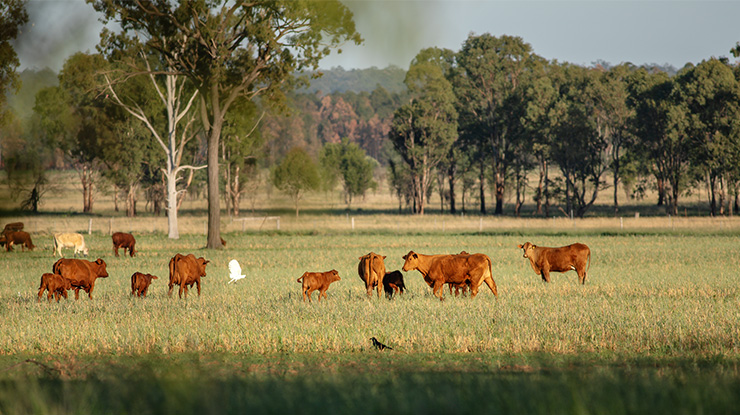 The age at which a calf is weaned determines its diet for the next few months, especially if weaning occurs in the dry season.
The age at which a calf is weaned determines its diet for the next few months, especially if weaning occurs in the dry season.
The normal time to wean and transition a calf to an adult diet is between 5–8 months of age however, producers may be forced to wean earlier due to circumstances outside their control, such as:
- calf orphaned or ill
- drought conditions (i.e. for the welfare of dam)
- calves born late in the season.
Table 1 below indicates the categories for weaning based on age, weight and reason for transitioning the calf to an adult diet.
Table 1: Weaning categories
Type of weaning |
poddy calves |
radical |
early |
normal |
Age |
under one week |
under three months |
3–5 months |
5–8 months |
Weight |
60–100kg |
100–150kg |
>150kg |
|
Reason for weaning |
calf usually orphaned or ill |
drought conditions, welfare of dam |
calves born late in the season |
usual time to transition to adult diet |
Development of the rumen
The rumen and reticulum start developing a few weeks after birth as the calf begins to eat fibrous feed, with the rumen microorganisms ('bugs') being transferred from adult cattle.
Under normal paddock conditions, the rumen will be functional by the time the calf is 10 weeks old. Milk remains the best source of energy, protein, calcium and phosphorus for the un-weaned calf.
Therefore, producers should avoid removing milk from a calf's diet until it is at least 10 weeks old, at which time the rumen becomes functional. Powdered milk or dry milk replacers can be used where a calf doesn't have access to its mother.
Diet ensures optimal performance
The nutrition of a growing calf has a significant impact on its performance as it reaches maturity. Providing the correct diet following weaning, regardless of age, ensures optimum performance of the animal.
Following weaning, the weaner must obtain all its nutrients from a pasture-based diet, typically high in fibre. In grazing cattle, the rumen microbes primarily break down this plant fibre through fermentation, which becomes the energy source for the animal.
Gradual change is key
Changes in any diet throughout the animal's life must be made gradually so that the rumen microbes can adjust. A rapid change from a fibre diet to one high in starch (grain) results in the rumen contents becoming too acidic, causing severe metabolic disorders or even sudden death.
The age at which a calf is weaned determines its diet for the next few months, especially if weaning occurs in the dry season. Urea can be used as a non-protein based nitrogen supplement, but calves without a functioning rumen (less than 10 weeks old) cannot utilise this. If they consume it without a fully functioning rumen, they may die.






